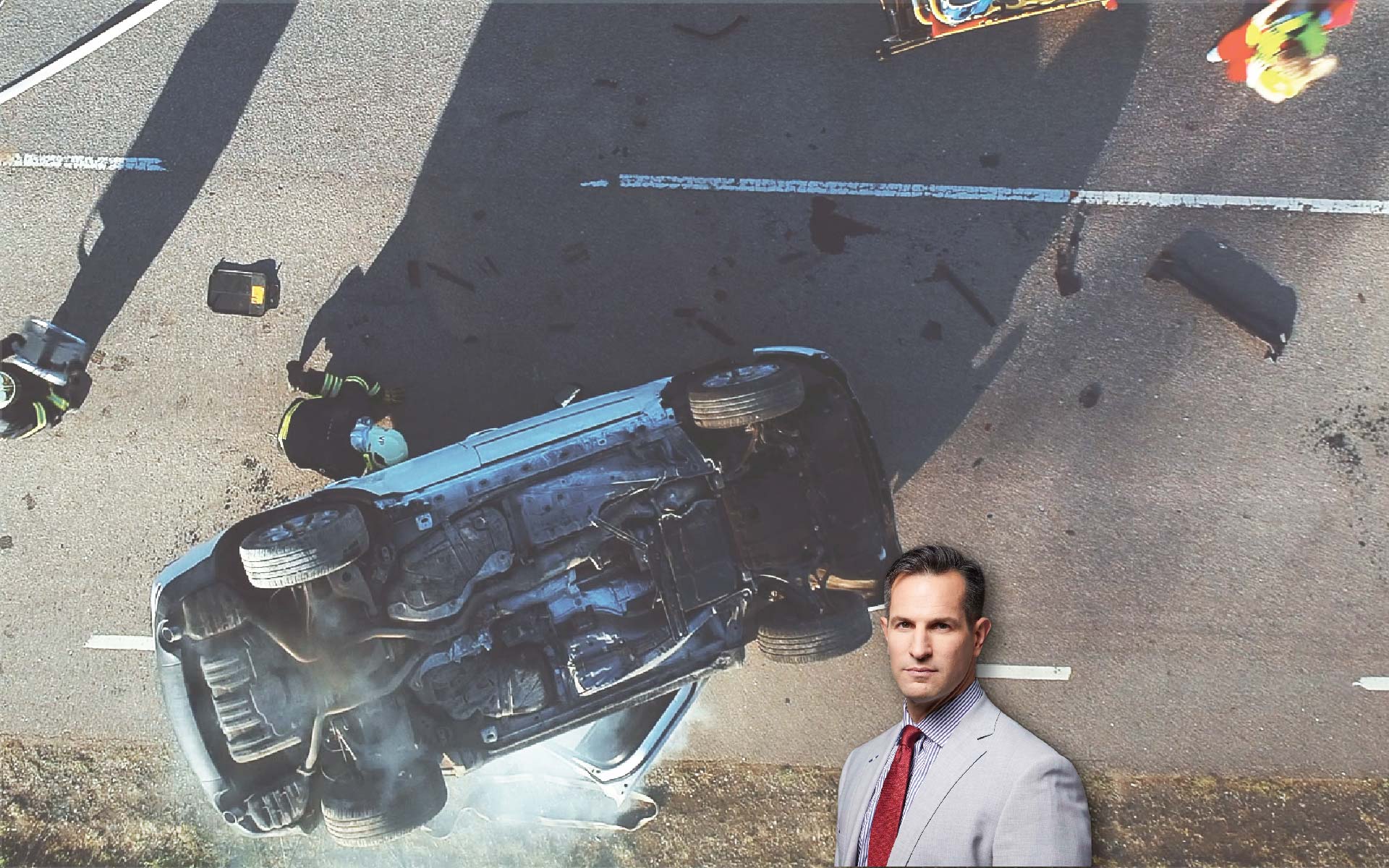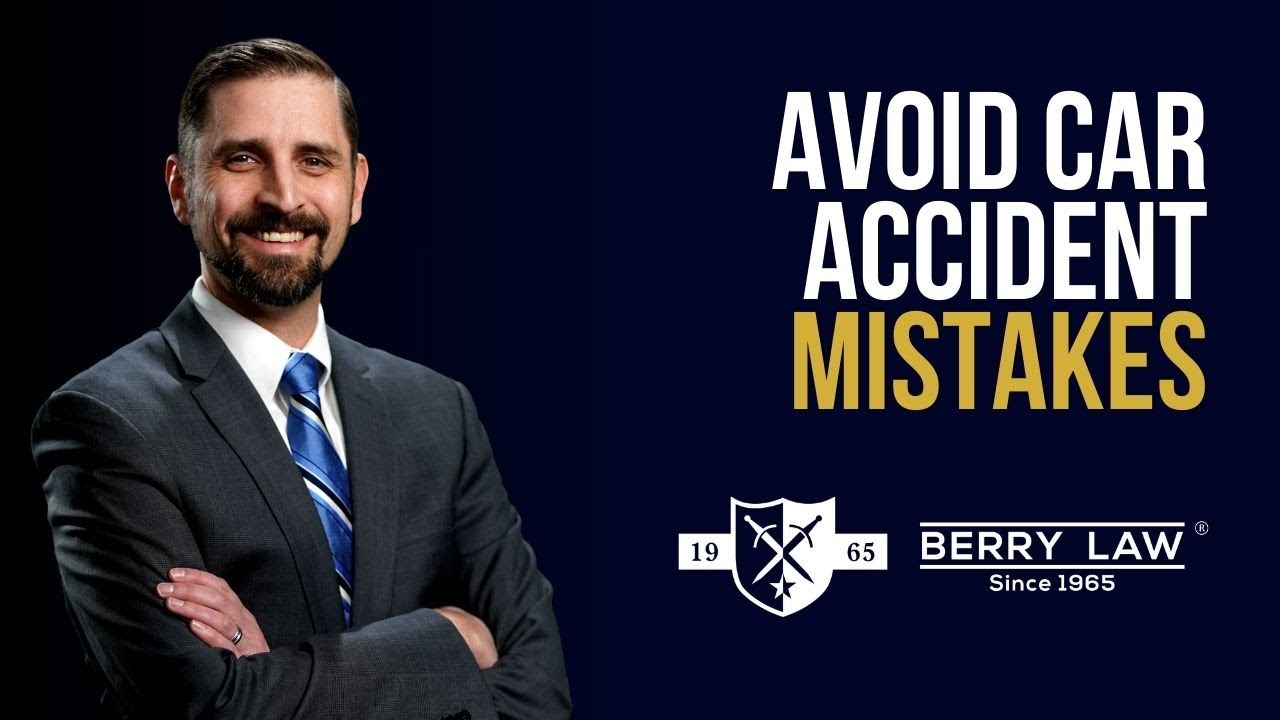According to the National Highway Traffic Safety Administration (NHTSA), an estimated 920,000 motor vehicle accidents each year can be attributed to distracted driving. Three thousand Americans will lose their lives, and another 400,000 will suffer injuries as a result of the behavior of distracted drivers.
These actions don’t just impact the reckless driver and their passengers. In 2018, 1 in 5 Americans who died in distracted driving-related accidents weren’t inside of a motor vehicle at the time of the crash. They were walking, running, riding a bike, or standing outside of their own vehicle.
What is Distracted Driving?
Distracted driving is classified as any action that turns a driver’s full attention away from the road. Some examples include talking and texting on cell phones, eating, drinking, smoking, applying makeup, and using a GPS or other electronic devices while driving.
While distracted driving today is most often attributed to the increased prevalence of cell phones in vehicles, there are many types of distracted driving that don’t involve the use of handheld devices.
- Visual Distractions cause a driver to remove his or her eyes from the road, including turning to talk to a passenger or someone in the backseat. Focusing too heavily on the rearview mirror can turn a driver’s attention from hazards ahead, resulting in rear-end accidents.
- Auditory Distractions include sounds like music, conversation, or a baby crying in the backseat that take a driver’s full attention from the task at hand.
- Manual Distractions cause a vehicle operator to remove his or her hands from the wheel to engage in activities like eating, drinking, or using electronics.
- Cognitive Distractions occur when a driver’s mind wanders due to emotions or fatigue.
Any type of distraction causes a failure to recognize and process information about objects in the roadway ahead. A disconnect between visual processing and the brain doesn’t allow for relay of information quickly enough for the body to react to avoid an accident.
One study by the Virginia Tech Transportation Institute and the NHTSA found that almost 80 percent of crashes and 65 percent of near-crashes involved one of these forms of driver inattention within three seconds of the event. Cell phones were the most common distraction, followed by drowsiness.
Another study published out of the University of Utah indicated that talking on a cell phone while driving is as dangerous as driving while under the influence of alcohol.
Combating the Problem
Officials across the country have tightened policies and launched public service campaigns through news and radio to try to combat distracted driving in their communities. NHTSA’s U Drive. U Text. U Pay. campaign hit states in 2014, with the Center for Disease Control and Prevention (CDC) rolling out a version targeting the parents of teen drivers called Parents are Key.
Forty-eight states and the District of Columbia have implemented bans on texting while driving, with 24 of those states outlawing the use of all handheld devices while operating a motor vehicle. The federal government and agencies have followed suit.
In 2009, President Barack Obama issued an Executive Order prohibiting federal employees from texting while driving when they are on official government business. The Federal Railroad Administration (FRA) has banned all cell phones and electronic devices for on-duty railroad operators, and the Federal Motor Carrier Safety Administration (FMCSA) banned drivers of commercial vehicles from texting while driving.
In conjunction with the Pipeline and Hazardous Materials Safety Administration, the FMCSA also implemented policy prohibiting drivers who are hauling hazardous materials from using handheld cell phones.
Risk Factors
According to data from the CDC, 25 percent of distracted drivers who are involved in fatal crashes are between the ages of 20 and 29. By comparison, teenage drivers (ages 15-19) only account for about 9 percent of distracted driving accidents.
However, younger drivers are more prone to distractions in general due to their lack of experience on the road. Results taken from the 2019 Youth Risk Behavior Surveillance System (YRBSS) showed that 39 percent of high school students who had driven in the past 30 days texted or emailed while they were driving.
Teen drivers who used electronic devices while operating a motor vehicle were also more likely to forgo wearing a seatbelt, to ride with a driver who was under the influence of alcohol, or to engage in drunk driving themselves.
The number of passengers in a vehicle is also a contributing factor to distracted driving, particularly among younger drivers. Limiting the number of passengers a teen driver is allowed to have reduces fatality numbers by limiting distractions. A national study found that fatal crashes were reduced by 21 percent when there were no passengers present inside of a vehicle and were seven percent less likely with only one passenger.
Berry Law’s Team Provides You With Multiple Attorney Perspectives
Legal and Financial Consequences
The consequences of distracted driving vary from state to state, but they can include hefty fines, suspension or revocation of a license, a permanent blemish on driving records, or even jail time.
Even if a state has no such law that restricts distracted behaviors like eating or applying makeup while driving, a driver can still receive a secondary violation if an officer stops him or her for speeding or running a red light and finds them to be engaging in such activities. In some states, they could be charged with reckless driving.
Distracted driving can also hit drivers in their pocketbooks. According to the Center for Policy Research, distracted driving has caused car insurance premiums to increase 16 percent since 2011.
Prevention
There are many steps drivers can take to prevent themselves from becoming distracted while driving.
- Put the phone away- Consider using a free app like AT&T’s DriveMode that will silence text message alerts and phone calls while a car is in motion. The phone will send an automatic reply to anyone who tries to call alerting them that the driver is unable to respond temporarily.
- Limit passengers- Limit the number of passengers in a vehicle, especially for new drivers.
- Avoid multitasking- Pull over to eat, drink, or smoke when behind the wheel.
- Restrain children and pets– Unbuckled children and pets free to roam around a vehicle cabin are distractions for any driver. They will also be safer in the event of an accident.
- Plan ahead- Program GPS and set radio stations before beginning the journey.
- Be an advocate- Encourage other drivers to avoid texting and driving.
Compensation For Damages
Individuals who have been injured in a distracted driving-related accident may be entitled to compensation for damages to person and property that resulted from another driver’s negligence. A personal injury attorney can guide clients through the process of recovering their lost capital and property.
Examples of medical compensation can include costs for treatment, emergency service vehicles and care, hospital stays and follow up appointments. Ongoing care like physical therapy or other rehab services may also be reimbursed.
Time missed from work, including lost income, loss of sick and vacation days or benefits lost while recovering from injuries sustained in an accident will be calculated toward damages awarded in a personal injury case.
Property damage, including bodywork and repairs to vehicles, can be costly expenses, and insurance may not cover the full extent of financial loss. In the event that a vehicle is totaled, a personal injury settlement may award a vehicle owner fair market value for their property. Insurance also won’t take care of out-of-pocket expenses like copays, rental cars, prescription medications, medical equipment or private nursing.
Additionally, claimants may be able to sue for personal pain and suffering depending on the nature of their injuries and the accident. Pain and suffering includes mental and emotional distress caused by the event, and is generally assessed in punitive damages, with a court determining the amount awarded.
Even when these losses are covered under the terms of an insurance policy, it’s often still difficult to recoup the full amount. Many insurance companies want to settle quickly so that claimants will accept cash-in-hand in lieu of pursuing a potentially lengthy legal case, but preserving their right to seek additional compensation down the road.
Never accept compensation until the full cost of injuries and losses from a distracted driving-related accident have been calculated. An experienced personal injury attorney can guide injured parties through the process and help fight for the compensation they deserve.
Personal Injury Cases
Distracted driving cases involving injury to person or property are based on the following four assumptions:
- A driver assumes a duty of care for others when he or she takes on the responsibility of operating a motor vehicle. If that driver is careless in upholding their duty of care, then negligence can be established.
- The driver in question breached their duty of care by engaging in an activity that caused them to become distracted. For example, a driver who was changing the radio station when they rear-end the vehicle in front of them may have breached their duty of care.
- Injuries inflicted on the claimant were the direct result of the other driver’s breach of duty. If the driver in the car that was rear ended suffers whiplash and lacerations as a result of the accident, those injuries were caused by the negligence of the driver who was changing the radio station.
- The accident resulted in monetary damages to the claimant. Evidence of costs incurred due to the accident are presented as part of the personal injury case.
The majority of personal injury cases are settled out of court to avoid the time, expense and negative publicity of going to trial. Statistics show that only about five percent of personal injury cases go to trial, with the remainder being settled during the pretrial phase.
Hiring An Attorney
Navigating the complexities of a personal injury case is a job for an accomplished personal injury attorney and not something a claimant should attempt on his or her own. Some things to consider when hiring a personal injury attorney:
- Successful litigation is dependent upon the familiarity an attorney has with personal injury law. Find an attorney who specializes in personal injury cases with a background of successful litigation in that area.
- Avoid attorneys who solicit business from claimants directly after an accident. So-called “ambulance chasing” is an unethical practice, one that a professional personal injury attorney will avoid.
- Request a consultation with any potential personal injury attorney before hiring him or her to determine if that individual is a good fit. A seasoned litigator will be frank about whether or not a client has a case.
- Discuss fee payment expectations. Some personal injury attorneys agree to take a case for a percentage of the verdict settlement. It’s important to understand the fee agreement up front.
Personal injury suits often involve a lengthy process, which can be frustrating when expenses from a distracted driving accident are piling up, but a good attorney won’t seek a rushed settlement. They may also ask a client to help with the evidence-gathering process by providing relevant documentation and evidence in the case.
For individuals involved in distracted driving accidents, having the expertise of a personal injury attorney is paramount in recovering the damages lost due to physical injury, loss of property, and emotional distress.




